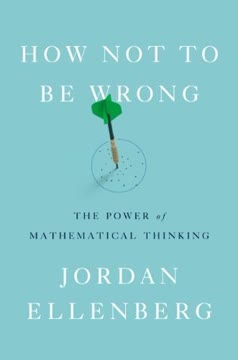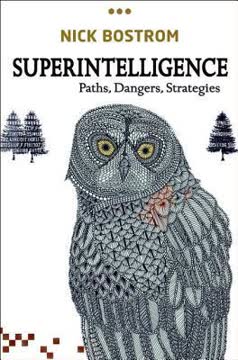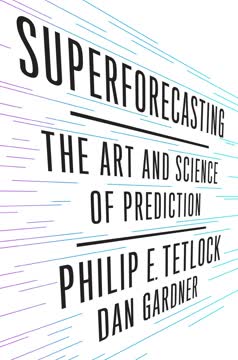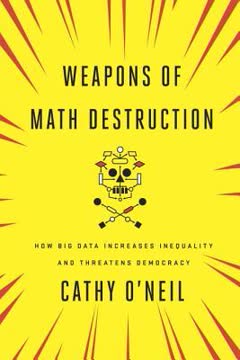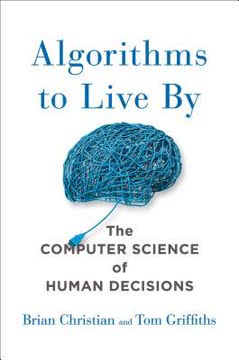重点摘要
1. 最优停止:何时在生活决策中做出承诺
“37%法则定义了一系列简单的步骤——计算机科学家称之为‘算法’——用于解决这些问题。”
37%法则。 这一数学原理表明,当面临一系列选择(如潜在伴侣或求职者)并需要选择最佳时,应该先审视37%的选项以建立基准,然后选择下一个比之前所有选项都更好的选项。该规则适用于各种生活决策:
- 伴侣选择:如果你计划在18到40岁之间约会,开始认真考虑长期伴侣的最佳时机大约在26岁。
- 房屋寻找:在出价之前查看37%的可用房屋。
- 停车:在线性停车场中,经过37%的停车位后开始寻找停车位。
该规则平衡了过早停止(错过更好的选项)和过晚停止(已经错过最佳选项)的风险。虽然它不能保证成功,但在信息有限的情况下优化了你做出最佳选择的机会。
2. 探索与利用:平衡新体验与喜好
“探索是收集信息,而利用是使用你已有的信息以获得已知的良好结果。”
探索/利用权衡。 这一概念解决了尝试新事物(探索)与坚持已知有效的事物(利用)之间的紧张关系。它在生活的各个方面都很相关:
- 外出就餐:尝试新餐厅还是回到老地方?
- 职业选择:追求新领域还是深化当前领域的专业知识?
- 旅行:访问新目的地还是回到心爱的地方?
最佳平衡会随着时间的推移而变化:
- 早期生活:更多关注探索以收集信息和经验
- 中年:逐渐转向利用,识别出个人偏好
- 晚年:更倾向于利用,享受已知的乐趣
平衡策略:
- 上置信界算法:选择潜在收益最高的选项
- Gittins指数:根据选项的潜力和不确定性分配值
- 商业中的A/B测试:在保持成功的同时系统性地尝试新方法
3. 排序:组织信息的力量与局限性
“规模会带来困难。”
效率随着规模的增加而降低。 随着数据量的增加,排序变得指数级困难。这个原理适用于计算和现实世界的排序任务:
- 数字排序:像归并排序和快速排序这样的算法旨在最小化这一规模问题
- 物理排序:整理一个小衣橱比整理一个大型仓库要容易得多
关键见解:
- 最佳排序方法取决于具体情况和目标
- 完美排序往往是不必要的,甚至可能适得其反
- 有时,保持事物未排序反而更有效(例如,杂乱的桌子)
现实世界的应用:
- 图书馆组织:在完美秩序与可用性之间取得平衡
- 体育排名:不同的比赛结构(如循环赛、淘汰赛)在准确性与效率之间提供权衡
- 个人组织:认识到“足够好”的排序就已足够
4. 缓存:高效的信息检索与记忆管理
“缓存在内存架构中扮演着关键角色,它影响着从毫米级的处理器芯片布局到全球互联网的地理分布。”
优化频繁访问。 缓存涉及将频繁使用的信息存储在易于访问的位置。这个原理适用于计算机系统和人类行为:
计算机缓存:
- 处理器中的多个缓存级别(L1、L2、L3)
- 内容分发网络(CDN)以加快网页访问
- 浏览器缓存以加快页面加载
人类缓存:
- 将常用物品放在触手可及的地方
- 根据使用模式组织生活空间
- 心理“缓存”重要信息
关键策略:
- 最近最少使用(LRU):在需要空间时移除最近最少访问的项目
- 时间局部性:最近使用的项目很可能会很快再次使用
- 空间局部性:靠近最近使用项目的物品很可能会很快被使用
日常生活中的缓存:
- 家庭组织:保持日常物品易于获取
- 工作效率:安排桌面以便快速访问常用工具
- 学习:定期复习重要信息以保持其在记忆中的“缓存”
5. 调度:优化任务完成与时间管理
“如果你遵循了最佳的过程,那么你已经尽力而为,如果事情没有如你所愿,不要责怪自己。”
过程重于结果。 有效的调度在于实施最佳过程,而不仅仅是关注结果。关键调度算法及其现实世界应用包括:
-
最早到期日(EDD):
- 计算机:最小化最大延迟
- 生活:优先处理紧急截止日期
-
最短处理时间(SPT):
- 计算机:最小化平均完成时间
- 生活:快速完成小任务以建立动力
-
摩尔算法:
- 计算机:最小化延迟任务的数量
- 生活:在工作过载时战略性选择哪些截止日期可以错过
实用调度策略:
- 将大任务分解为较小、可管理的部分
- 使用时间盒技术(如番茄工作法)保持专注
- 为意外问题预留缓冲时间
- 定期重新评估和重新优先排序任务
避免常见陷阱:
- 频繁切换任务:过于频繁地切换任务,降低整体生产力
- 优先级反转:低优先级任务阻碍高优先级任务
- 过度优化:花费更多时间规划而非执行
请记住,由于不确定性和变化的情况,完美的调度往往是不可能的。目标是实施一个能够适应新信息和约束的稳健过程。
6. 贝叶斯法则:用有限信息做出更好的预测
“小数据是伪装的大数据。”
用新证据更新信念。 贝叶斯法则提供了一个基于有限信息做出理性预测的框架,并在新数据可用时更新这些预测。这种方法在各个领域都很有价值:
贝叶斯思维的应用:
- 医学诊断:根据测试结果更新疾病概率
- 财务预测:根据新的经济数据调整市场预测
- 刑事调查:随着证据的出现重新评估嫌疑人的可能性
关键贝叶斯概念:
- 先验概率:新证据之前的初始信念
- 似然性:在假设下证据的概率
- 后验概率:考虑新证据后的更新信念
实用的贝叶斯策略:
- 保持开放的心态,接受新信息
- 寻找反驳证据以挑战你的信念
- 随着新数据的出现定期更新你的预测
- 认识到知识的局限性并表达不确定性
日常生活中的贝叶斯思维:
- 约会:随着对一个人了解的加深更新对兼容性的评估
- 职业决策:根据新经验和反馈调整计划
- 消费选择:随着每次购买和使用不断完善产品偏好
7. 过拟合:过度思考和复杂化的危险
“在杂乱中保持谨慎。”
简单性往往胜过复杂性。 过拟合发生在模型或决策过程变得过于复杂时,适应了数据中的噪声而非潜在模式。这个概念适用于机器学习和人类决策:
机器学习中的过拟合:
- 训练数据完美拟合,但在新数据上的表现不佳
- 解决方案:交叉验证、正则化技术
人类过拟合:
- 过度思考决策,导致分析瘫痪
- 制定过于复杂的计划,在现实条件下失败
避免过拟合的策略:
- 接受不确定性和不完美的信息
- 使用简单的启发式方法进行快速决策
- 定期退后一步,评估全局
- 在全面实施之前,在小规模、低风险的场景中测试想法
过拟合的现实例子:
- 金融市场:在变化条件下失败的过于复杂的交易策略
- 项目管理:在首次接触现实时崩溃的过于详细的计划
- 人际关系:过度分析社交互动,导致尴尬
请记住,目标是为手头的问题找到合适的复杂性水平,而不是消除所有的不确定性或不完美。
8. 放松:简化复杂问题以获得更好的解决方案
“如果你无法解决眼前的问题,那就解决一个更简单的版本——然后看看这个解决方案是否为你提供了一个起点或指引,帮助你应对完整的问题。”
战略性简化。 在计算机科学中,放松涉及暂时移除或简化约束,以使问题更易于管理。这种方法可以应用于各种现实挑战:
放松的类型:
- 约束放松:暂时忽略某些规则或限制
- 连续放松:将离散选择视为连续变量
- 拉格朗日放松:将硬约束转化为惩罚
放松的好处:
- 为解决复杂问题提供起点
- 提供对问题结构的洞察
- 当完美解决方案不切实际时,可以导致“足够好”的解决方案
将放松应用于日常问题:
- 职业规划:从理想情景开始,然后调整以适应现实
- 预算优化:从不受约束的支出开始,然后进行优先排序
- 创意项目:在没有限制的情况下进行头脑风暴,然后完善想法
放松的实际例子:
- 城市规划:设计理想的城市布局,然后适应地理约束
- 产品开发:设想一个完美的产品,然后在技术限制内工作
- 冲突解决:想象一个理想的结果,然后朝着现实的妥协进行谈判
请记住,放松是生成想法和起点的工具,而不是处理现实约束的替代品。关键是利用从简化版本中获得的洞察来指导你对完整问题的处理。
9. 随机性:利用偶然性解决问题
“有时,解决问题的最佳方法是转向偶然,而不是试图完全推理出答案。”
拥抱受控的混乱。 随机性可以成为突破局部最优解和寻找创新解决方案的强大工具。这个原理适用于计算和人类问题解决:
计算中随机性的应用:
- 模拟退火:逐渐减少随机性以找到良好解决方案
- 遗传算法:使用随机突变来进化更好的解决方案
- 蒙特卡洛方法:随机抽样以估计复杂概率
人类应用随机性:
- 创意头脑风暴:随机词汇联想以激发新想法
- 决策:抛硬币打破分析瘫痪
- 学习:探索随机主题以拓宽知识
引入随机性的好处:
- 克服认知偏见和固执的思维模式
- 探索更广泛的解决方案空间,可能找到意想不到的解决方案
- 当理性分析失败时,提供一种前进的方式
利用随机性的策略:
- 在创作工作中使用随机提示或约束
- 定期在日常中引入随机元素以避免陷入惯性
- 拥抱偶然的邂逅和意外的机会
富有成效的随机性例子:
- 科学发现:偶然发现导致突破
- 艺术与音乐:实验技术产生创新作品
- 职业道路:意外的绕道带来充实的机会
虽然随机性可以是强大的,但重要的是要与结构化思维保持平衡,并认识到何时需要精确。目标是将随机性作为工具,而不是完全依赖它。
10. 网络:理解与优化人际关系
“信息简单而深刻:如果我们愿意接受足够接近的解决方案,那么即使是一些最棘手的问题也可以通过正确的技术得到解决。”
优化连接,而不仅仅是内容。 计算机科学中的网络原理为人类社交网络和沟通提供了洞察:
关键网络概念:
- 数据包交换:将消息分解为小的、可管理的部分
- 路由协议:寻找信息流动的高效路径
- 拥塞控制:管理通信渠道的过载
将网络原理应用于人际互动:
- 信息共享:将复杂的想法分解为易于消化的部分
- 关系建立:建立多个联系以增强网络的韧性
最后更新日期:
FAQ
What's Algorithms to Live By about?
- Exploration of decision-making: The book explores how algorithms from computer science can be applied to everyday human decisions, such as dating, apartment hunting, and scheduling.
- Interdisciplinary insights: Authors Brian Christian and Tom Griffiths blend computer science, psychology, and philosophy to provide a comprehensive view of decision-making.
- Practical applications: It offers strategies for optimizing choices in various scenarios, making complex concepts accessible to a broad audience.
Why should I read Algorithms to Live By?
- Enhance decision-making skills: The book provides tools and frameworks to improve decision-making in both personal and professional contexts.
- Engaging storytelling: The authors use relatable anecdotes and examples to make complex concepts engaging and easy to understand.
- Broader understanding of algorithms: It encourages critical thinking about how algorithms influence various aspects of life, from technology to social interactions.
What are the key takeaways of Algorithms to Live By?
- Optimal stopping: The "37% rule" suggests sampling 37% of options before making a decision to maximize the chances of selecting the best one.
- Explore/exploit tradeoff: The book discusses balancing exploration of new options with exploitation of known ones for effective decision-making.
- Bayesian reasoning: Emphasizes updating beliefs based on new evidence to refine decision-making processes.
What is the "37% rule" in Algorithms to Live By?
- Optimal stopping strategy: The rule suggests sampling 37% of options before making a decision to maximize the likelihood of selecting the best one.
- Mathematical foundation: Derived from probability theory, it provides a systematic approach to decision-making in uncertain situations.
- Real-life applications: Applicable to scenarios like choosing a partner, hiring employees, or selecting a job offer.
How does Algorithms to Live By explain the explore/exploit tradeoff?
- Balancing act: The tradeoff involves choosing between exploring new options and exploiting known ones, crucial for optimizing decisions.
- Epsilon-Greedy strategy: Suggests exploring new options a small percentage of the time while primarily exploiting the best-known choice.
- Practical implications: Helps in making better choices in contexts like investing, job searching, or social interactions.
How does Algorithms to Live By explain Bayesian reasoning?
- Updating beliefs: Bayes's Rule is used to update the probability of a hypothesis based on new evidence, refining decision-making processes.
- Practical applications: Applied in situations like medical diagnosis or predicting outcomes, helping make informed decisions.
- Cognitive implications: Encourages critical thinking and a nuanced approach to decision-making by considering both prior beliefs and new evidence.
What is the Secretary Problem in Algorithms to Live By?
- Optimal stopping scenario: Involves choosing the best candidate from a pool of applicants interviewed sequentially.
- 37% rule application: Reject the first 37% of candidates to establish a baseline, then select the next candidate better than all previously seen.
- Broader implications: Illustrates decision-making challenges under uncertainty and the mathematical principles guiding optimal choices.
What is overfitting and how does it relate to decision-making in Algorithms to Live By?
- Definition of overfitting: Occurs when a model is too complex, capturing noise rather than the underlying pattern in data.
- Impact on decisions: Can lead to poor decision-making by relying on overly complex models that don't generalize well.
- Strategies to avoid overfitting: Use simpler models and regularization techniques to make more robust choices in uncertain environments.
How does Algorithms to Live By address the concept of computational kindness?
- Definition of computational kindness: Designing systems and algorithms that reduce cognitive load and ease decision-making.
- Real-world examples: Applied in situations like restaurant seating policies or urban planning to enhance user experience.
- Broader implications: Encourages creating environments that support better decision-making with less mental effort.
What are some examples of algorithms discussed in Algorithms to Live By?
- Mergesort: Highlighted for its efficiency in organizing data, demonstrating the importance of sorting in computing and everyday life.
- Caching algorithms: Discussed for personal organization, emphasizing prioritizing frequently accessed items.
- Scheduling algorithms: Explored for optimizing time management and task completion in personal and professional contexts.
What does Algorithms to Live By say about scheduling?
- Single-machine scheduling: Explores managing tasks and deadlines, prioritizing based on due dates and task lengths.
- Optimal strategies: Presents algorithms like Earliest Due Date and Shortest Processing Time to enhance productivity.
- Real-world applications: Principles can be applied to everyday life, helping manage time and tasks effectively.
What are the best quotes from Algorithms to Live By and what do they mean?
- "The heart has its reasons that reason knows not.": Highlights the tension between emotional and rational decision-making.
- "Life is just too complicated for that.": Reflects the complexity of real-world decision-making, encouraging practical approaches.
- "Computational kindness isn’t just a principle of behavior; it’s also a design principle.": Advocates for user-friendly systems that facilitate better decision-making.
评论
《生活中的算法》获得了大多数积极的评价,因为它将计算机科学的概念应用于日常决策。读者们欣赏书中对常见问题的最佳策略的洞察,尽管有些人觉得数学解释较为困难。该书因其引人入胜的写作风格和实用性而受到赞扬,但也有少数人批评其过于简化。许多评论者强调了该书通过算法思维提供独特自助方法的特点。总体而言,推荐给技术精通的读者以及那些希望改善决策过程的人。
Similar Books



